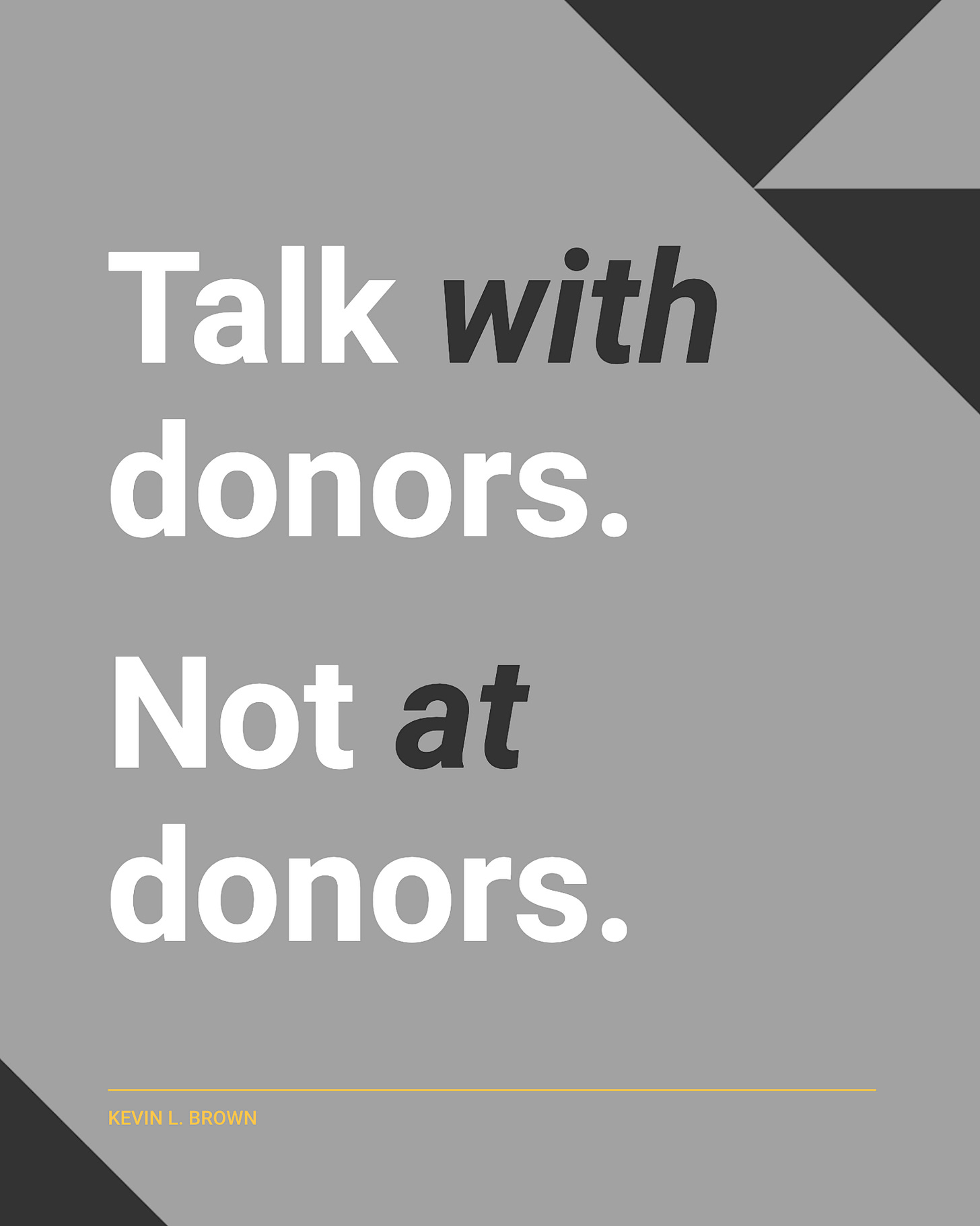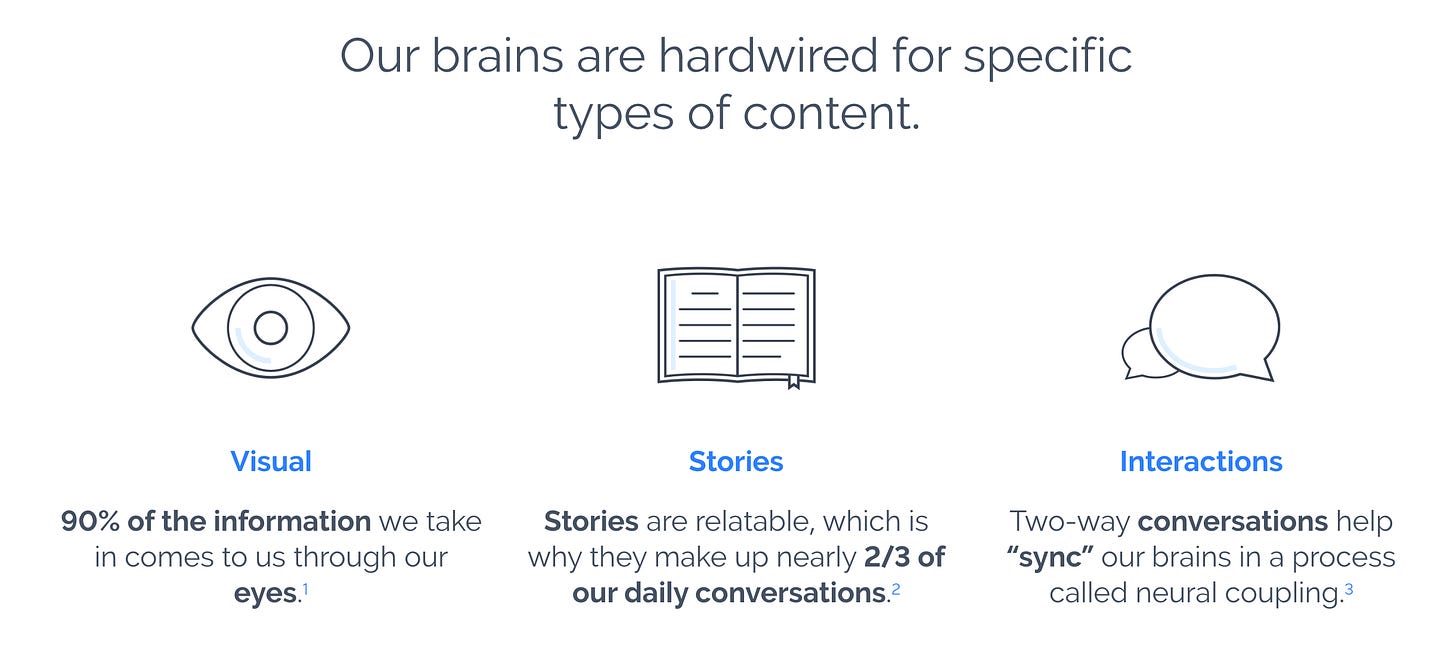Reject: donor presentations.
Embrace: fundraising conversations.
Because research found that collaborating with your prospect is the second key behavior to funding success — right after educating them.
Funders can smell desperation.
So whether it’s a fundraising or sales meeting, you must break the habit of trying to convince. Instead, talk with donors about a potential, mutual fit.
“Having been a donor, I can confirm that those I loved working with were the ones that wanted to collaborate and co-create and with whom there was mutual candour,” says Rashmir Balasubramaniam.
Here’s how in three golden rules:
🥇 Ask lots of questions.
The better your questions, the better your answers. Because you’ll know how to tailor your side of the chat.
🥈 Use your pitch deck sparingly.
Show your deck only to spark the conversation, then take it off-screen and send it as a follow-up. I do this myself and watch people’s eyes fill with relief.
🥉 Aim to speak just ~40% of the time.
Even if the prospect asks you to present, getting them to talk is better. Case in point: studies show the highest close rates at a 43/57 talk-to-listen ratio.
Like somebody’s wise mother once said —
We have two ears and one mouth for a reason. Let’s shut up and listen. (Especially us men.)
Your donors want a partnership.
Not a performance.
💪🏽💛
The daily bonus
The 43/57 talk-to-listen ratio data point mentioned above comes from a study by Prezi, called The Science of Effective Presentations. Here's more on the findings:
RAIN Group research found that prospects listed collaboration, listening, understanding needs, and connecting personally as some of the most important. In fact, collaborating with the prospect is listed as the number two most important behavior when it comes to winning a sales pitch, just after educating the prospect with new ideas.
What, exactly, does collaboration mean in the context of a sales pitch, or a presentation in general? RAIN Group writes that “‘collaborate’ makes the seller a key component of the buyer’s success.” By making your audience feel like you are working together towards a common goal, you can build a sense of trust and rapport that is central to being persuasive.
Crafting your pitch like a conversation—and allowing your audience to take the driver’s seat in deciding what to discuss—is a key tool in selling effectively. More broadly, in any presentation where you are trying to convince your audience to take action, consider taking a more collaborative approach if you want to be successful.
Sneak peek
Coming up in tomorrow’s newsletter:
Remittances are an unsung hero of global development. So let’s rebrand them as a headliner in our narratives.




Great post like always! I wanted to understand — for fundraising, how critical is the org’s impact metrics? Even if the org gets everything else right like branding, positioning, engagement etc, are impact metrics a make-or-break aspect for funders? Connected question — usually funders want very rigorous evaluation and data (which is expensive for small NPOs) to convince them to fund but that’s shifting very slowly. Do you sense an increasing acceptance for more cost effective participatory methods for evaluation or AI application in M&E? Sorry for the loaded question but inspired several thoughts :)